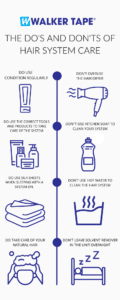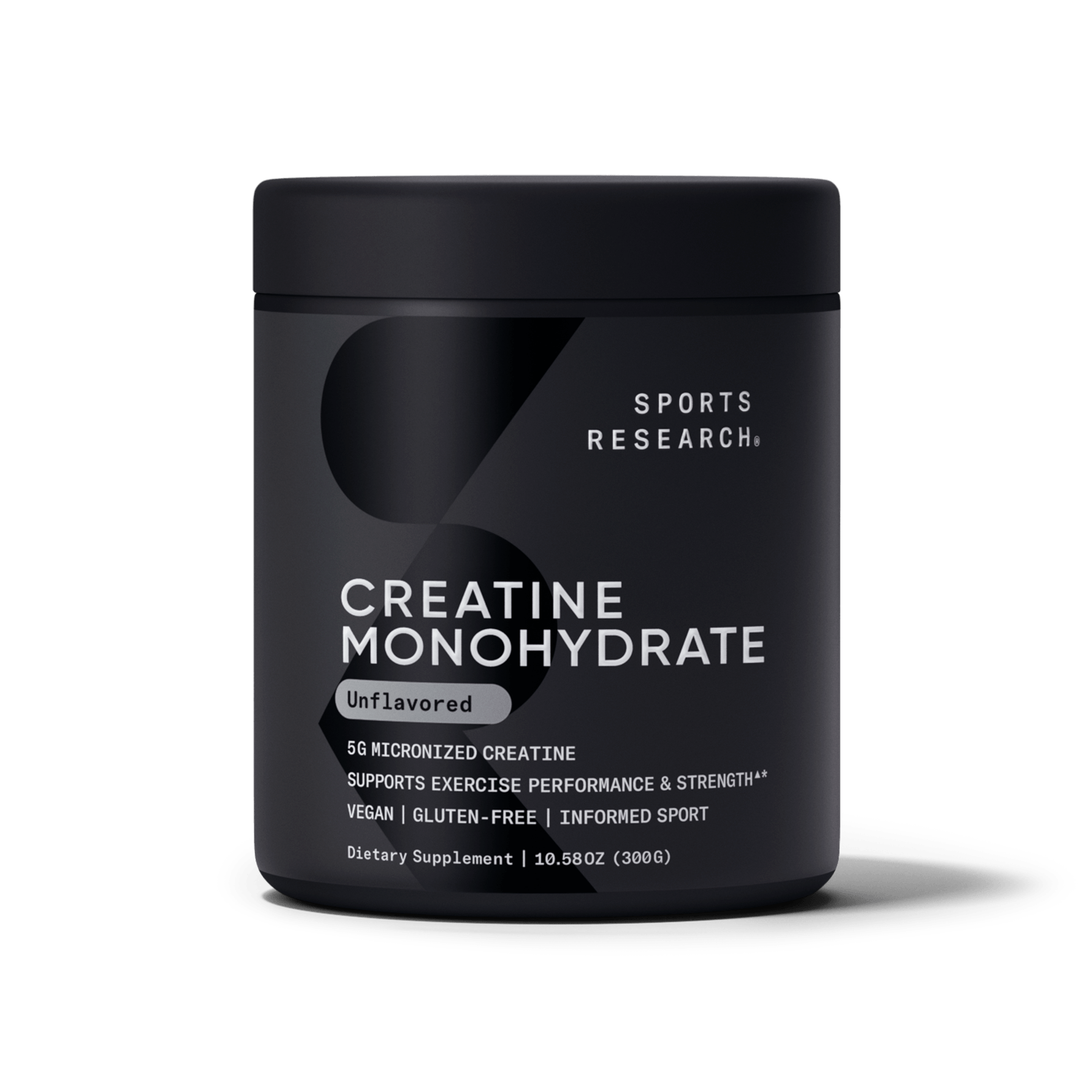
There are heaps and heaps and heaps of information out there on taking care of, managing, washing, and wearing hair systems. Some of that information can be an amazing help for you, and other information can be completely terrible.
How does one discern what information is useable and what information belongs in the trash can? That’s where Walker Tape® can help.
Here are the Do’s and Don’ts of Hair System Care.
DO Use Conditioner Regularly
Sun, heat, hair products, chlorine, and low-quality water are just some of the factors that can cause hair system fibers to dry and crack. Dry hair can then lead to shedding and shedding leads to the hair system wearing out quicker.
Luckily, there is an easy solution to that problem!
Make sure that you condition your hair systems regularly, whether with Leave-In Conditioner (for bio/natural hair) or System Revitalizing Mist (for synthetic hair).
Conditioning the unit regularly will keep the hair soft, moisturized, smooth, and lasting longer.
DO Use the Correct Tools and Maintenance Products
Choosing and using the right system tools and products is the key to getting the most wear out of your unit.
Be sure to use bristle brushes and combs. The thin prongs will glide through the system, ridding tangles and preventing the hair from dragging.
Use colour-safe shampoos and conditioners, detanglers, and knot sealer sprays to keep the system at its peak performance, fibers in shape, and knots tight.
Avoid heat (blow dryers, hot sun, etc.) if possible. If not, use a heat protectant spray before heading into an arena for a battle against heat.
When not wearing the unit, use a mannequin head stand to help the unit keep its shape and prevent tangling and such.
DO Use Silk Sheets When Sleeping with A System On
Friction is one of the leading causes of tangling, frizzing, and hair loss for hair system wearers; and one of the top offenders for friction is the wrong kind of pillowcases and bed sheets.
Certain types of pillowcases, such as cotton, can cause friction when a wearer constantly moves their head during the night. This can cause the cuticle of the hair to open and prime it for tangling.
To prevent certain disaster, make sure to have your clients use satin or silk sheets and pillowcases if they choose to sleep with the unit on. Satin and silk allow the hair to slide across the surface without generating tension.
Securing the unit with a silk bandana, silk headscarf, or silk bonnet is also recommended as extra measures for sleeping with a unit on.
DO Take Care of Your Natural Hair
Taking care of your natural hair is vital to your health, your system’s bond, and to achieve an all-natural look.
Washing your bio/natural hair and scalp regularly can help keep them healthy by getting rid of sweat and bacteria that could potentially lead to dryness, itching, thinning, and a plethora of other potential problems.
Proper care of your bio hair can also help to achieve a longer and more natural look for your hair system when it is applied!
DON’T Overuse the Hair Dryer
Heat, no matter the source, is not friendly whatsoever for hair systems, especially your hair dryer. The heating from the hair dryer can split knots into the hair fibers and cause shedding.
This is especially the case for synthetic hair systems, as the heat can melt the fibers in the hair system and cause serious damage.
It is highly recommended that you air dry your hair system in a dry and dark room, on a mannequin stand away from any unnecessary heat.
DON’T Use Kitchen Soap to Clean the System
Kitchen soap has become pretty popular these days to clean gunk and residue from hair systems, but it causes more harm for the unit than it does good.
The harshness of the soap can damage and dry out the hair fibers, even washing out the color of the hair itself. If you have clients with dry scalps or dry hair, it could be made even worse by the soap.
Walker Tape® recommends using a hair system safe remover and shampoo to clean hair systems, such as Walker Solvent and Bond Breaker Shampoo.
DON’T Use Hot Water to Clean the System
Like hot air and heat itself, hot water also brings its fair share of problems for hair systems.
Hot water can damage the roots of the hair (which, if using a Remy hair system, can be devastating) and lead to the system dealing with lots of unwanted and unneeded frizziness.
Walker Tape® recommends washing your systems in warm water to achieve the best balance of system-safe and effective cleaning.
DON’T Leave Solvent Remover in the System Overnight.
While Walker Tape® solvent removers are generally safe for hair and to remove adhesive buildup and residue, we highly recommend following the usage instructions available on the bottle or product page on our website.
Once the residue is fully worked out, rinse the remover out of the system completely. For silicone bases, do not leave the remover on for more than 2-3 minutes, maximum.

These Do’s and Don’ts of hair system care will help keep your hair system looking and lasting longer. For even more ways to keep your system in tip-top shape, discover how to get the most long-term wear out of your system.




